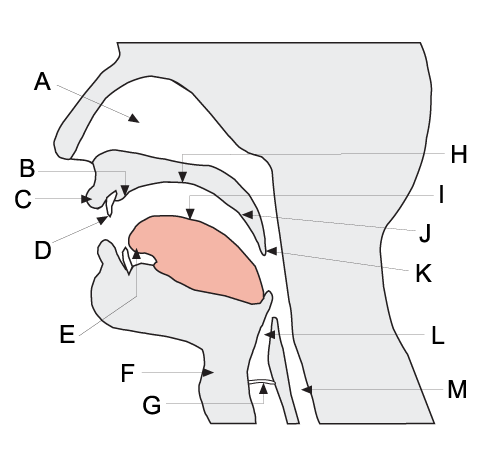|
Consonants
In articulatory phonetics, a consonant is a speech sound that is articulated with complete or partial closure of the vocal tract, except for the h sound, which is pronounced without any stricture in the vocal tract. Examples are and pronounced with the lips; and pronounced with the front of the tongue; and pronounced with the back of the tongue; , pronounced throughout the vocal tract; , , and pronounced by forcing air through a narrow channel (fricatives); and and , which have air flowing through the nose (nasals). Most consonants are pulmonic, using air pressure from the lungs to generate a sound. Very few natural languages are non-pulmonic, making use of ejectives, implosives, and clicks. Contrasting with consonants are vowels. Since the number of speech sounds in the world's languages is much greater than the number of letters in any one alphabet, linguists have devised systems such as the International Phonetic Alphabet (IPA) to assign a unique and unambiguous ... [...More Info...] [...Related Items...] OR: [Wikipedia] [Google] [Baidu] |
Articulatory Phonetics
The field of articulatory phonetics is a subfield of phonetics that studies articulation and ways that humans produce speech. Articulatory phoneticians explain how humans produce speech sounds via the interaction of different physiological structures. Generally, articulatory phonetics is concerned with the transformation of aerodynamic energy into acoustic energy. Aerodynamic energy refers to the airflow through the vocal tract. Its potential form is air pressure; its kinetic form is the actual dynamic airflow. Acoustic energy is variation in the air pressure that can be represented as sound waves, which are then perceived by the human auditory system as sound. Respiratory sounds can be produced by expelling air from the lungs. However, to vary the sound quality in a way useful for speaking, two speech organs normally move towards each other to contact each other to create an obstruction that shapes the air in a particular fashion. The point of maximum obstruction is called ... [...More Info...] [...Related Items...] OR: [Wikipedia] [Google] [Baidu] |
